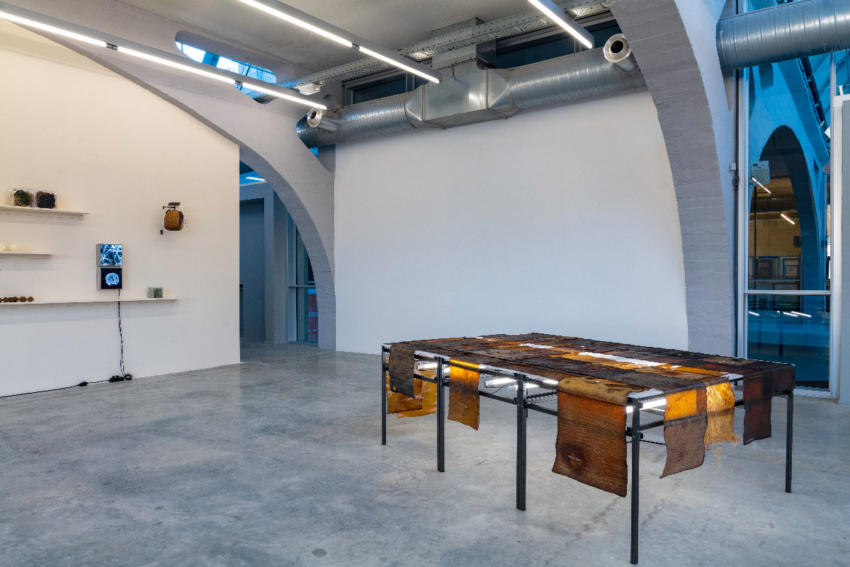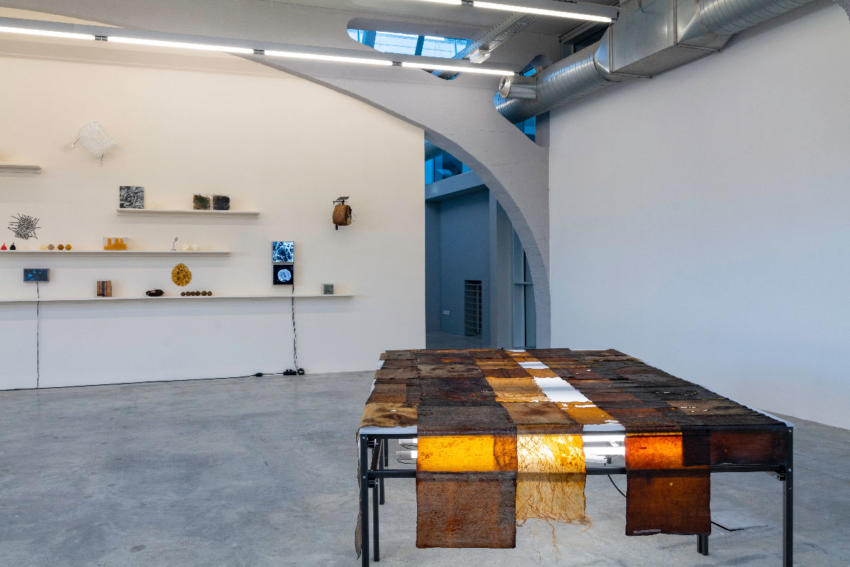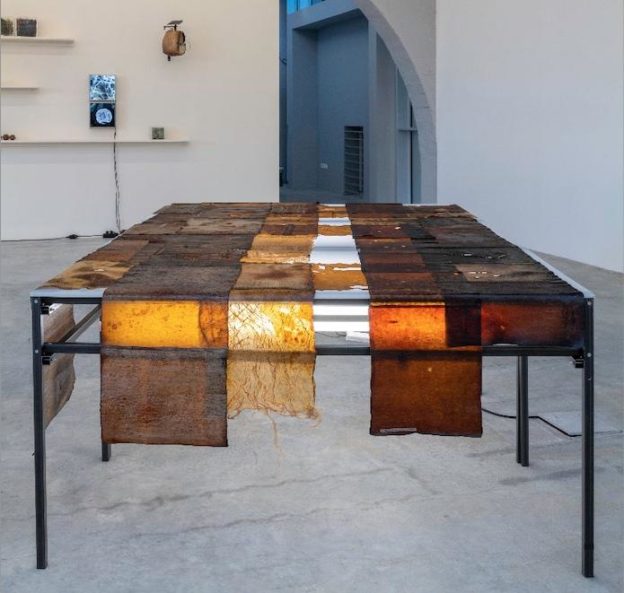Since 2015, Anne Marie Maes has been developing organic material by fermenting bacteria and yeasts that leave behind a brownish vegetable leather once removed from their substrate. Expanding, curling, and hardening with the temperature or humidity in the air, these biofilms are called Sensorial Skins to emphasis their living and evolving nature. Simultaneously acting as a protective layer and an interface between the exterior and interior environments, skin is the first organ we see when we meet the other. So the microbiological world exposes itself to our gaze in the form of these rectangular leathers displayed on the illuminated table, where each life line and each detail of their matter appears through transparence. The roughness of these membranes is indicative of their genesis as the fruit of an agglomeration of various bacterial colonies. The resulting skins can then be read like topographic maps that bear the marks of their progressive aging.
Although microorganisms are usually invisible to the naked eye, these organic textiles reveal them to our sense of sight and smell, making the skin that separates us from the other the one that also mediates our encounter.

Table with Sensorial Skins, 150cm x 225cm x 75cm – photo JJ.Delattre

